A prepper’s way of life is to plan for any type of situation that might occur throughout life. One area that’s a concern for many is food. It’s easy to grab the non-perishables because they… well, don’t perish. However, while it’s easy, it also can get monotonous to dine on canned goods after a while.
So, if you are like most humans, you probably would like a wider selection to choose from, whether you’re enjoying dinner at home or out on an excursion somewhere. There are limits to the preserving methods most of us know, though. Vegetables and fruits can be canned, but meat, poultry and fish are often difficult to keep on hand for any decent length of time. However, if you enjoy fish, have you heard of salt cod or bacalao?
It’s a way to store fish for longer, years even, without it going bad. Whether you purchase your fish at a local market or catch your own, you will no longer have to use it all up in a day or two before throwing it out.
What is Bacalao?
Good question! Bacalao is fish which has been cured through a dry-salting method. Dry fish was being made by the Vikings as far back as the 9th century, and is still popular in Norway today. Then someone found that adding salt made the drying process more effective. Basque fishermen were doing that at least 500 years ago, to let them bring cod home across the Atlantic from the rich fishing grounds off the Grand Banks; within a couple of centuries the technique had been picked up in Portugal, Spain, France and the UK, and Atlantic cod had become a staple food in those countries. Even today bacalao is used around the world to create popular dishes, such as in France and Spain where they use it to make brandade, which is a creamy spread created with salt cod and olive oil, served with bread or potatoes. In Portugal they use bacalao to make savory stews.
In the English-speaking world bacalao is often called salt cod, because that’s the fish it’s most associated with, but it can be made from almost any non-oily white fish. Flounder, pollok, whiting and haddock are all excellent choices.
Fortunately, the process of making the bacalao is quite easy. It is a bit time consuming though, because it takes a week or two. The good news is that most of that time is simply waiting for it to dry out. The actual process takes very little time in prep work.
The result is a well-preserved fish for you to use whenever you are ready, and that will last up to three years if well stored.
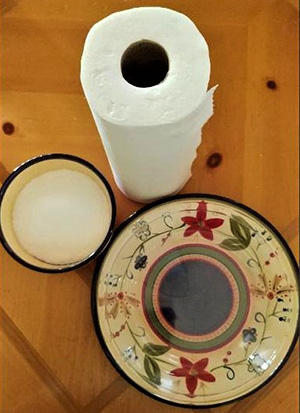
First Stage of Making Salt Cod
We used cod for this article, but as mentioned above there are other types of fish you can use. So, when you see “cod”, feel free to insert the fish of your choice.
Make sure you have the supplies on hand, which are minimal. For the first stage, they include:
- Fish fillets
- Kosher or sea salt, medium to coarse grain
- Paper towels or dish towel
- Glass or stainless-steel container
- Refrigerator
The first step is to prepare the fish by rinsing it thoroughly with cold water. Then, pat the fillets dry with paper towels or a clean dish towel.
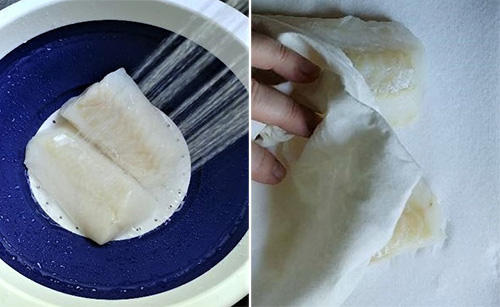 Next, pour a ½” layer of the sea or kosher salt into the bottom of the container. Place the fish on top of the salt, in a single layer, and make sure the pieces are not touching each other or the side of the container – you want each piece to be completely surrounded by salt. Pour an additional ½” of salt on and around the fish. Make sure that the fish is totally covered.
Next, pour a ½” layer of the sea or kosher salt into the bottom of the container. Place the fish on top of the salt, in a single layer, and make sure the pieces are not touching each other or the side of the container – you want each piece to be completely surrounded by salt. Pour an additional ½” of salt on and around the fish. Make sure that the fish is totally covered.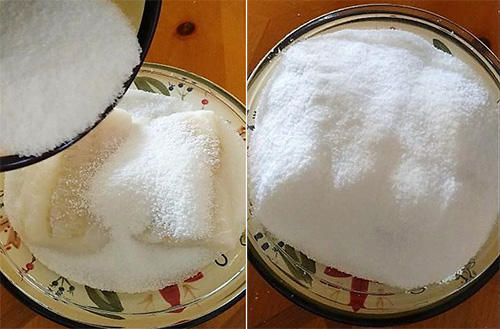 If you have more than one layer, repeat the steps above, making sure the fish is not touching each other and that each layer is well covered. It doesn’t matter how many layers you put in; just bury them in salt!
If you have more than one layer, repeat the steps above, making sure the fish is not touching each other and that each layer is well covered. It doesn’t matter how many layers you put in; just bury them in salt!
Cover the fish and store it in a cold (but not freezing) place, such as your refrigerator, for 48 hours.
Drying the Fish
After it’s been “salting” for 48 hours, wipe the excess salt off the fillets with paper towels or a clean dish towel.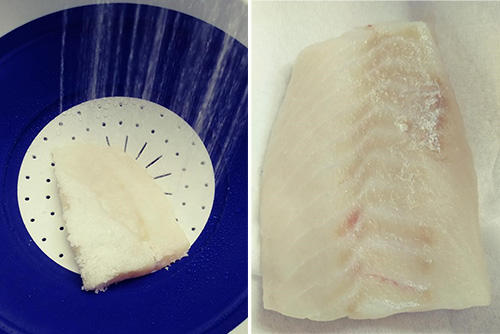 Wrap the fillets in cheesecloth, similar to how a butcher wraps a roast at the meat counter, tucking the sides in as you roll it up.
Wrap the fillets in cheesecloth, similar to how a butcher wraps a roast at the meat counter, tucking the sides in as you roll it up.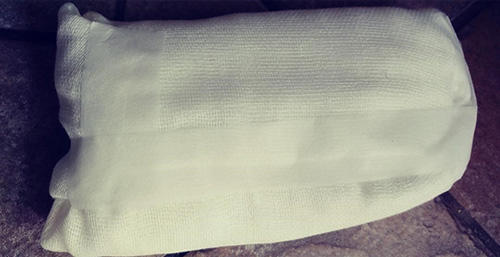 Place it on an overturned baking dish or rack on a plate, and then put it back into the refrigerator, uncovered. Now, simply let it dry out in the refrigerator for 1-2 weeks. In a SHTF situation and don’t have power to keep the refrigerator running? No problem! Traditionally, fishermen hung their salted cod on racks to let the sun and wind dry it. If you’re doing this, screening it with fine mesh to keep flies off is a good idea, but it should be too salty for insects to do it much damage anyway.
Place it on an overturned baking dish or rack on a plate, and then put it back into the refrigerator, uncovered. Now, simply let it dry out in the refrigerator for 1-2 weeks. In a SHTF situation and don’t have power to keep the refrigerator running? No problem! Traditionally, fishermen hung their salted cod on racks to let the sun and wind dry it. If you’re doing this, screening it with fine mesh to keep flies off is a good idea, but it should be too salty for insects to do it much damage anyway.
When it’s ready, it will be dry and stiff…and you have bacalao!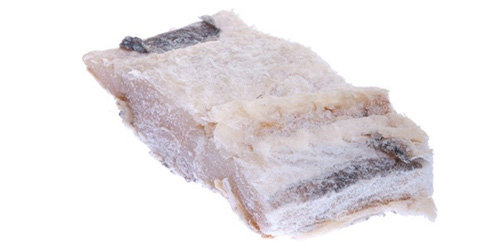
Once the bacalao is ready, wrap it in paper or fine cloth and store it in boxes. Traditionally wooden boxes were always used, and they’re still the best option; they let the fish dry out even more. Of course the opposite is also true – if you store it in a humid place the salt will soak up any moisture from the air, and pass it on to the fish, so it’s important to keep it somewhere dry. If you do that, though, it will last for at least two or three years without refrigeration. Most people now keep it frozen or refrigerated, but if it’s been properly dried that’s not necessary. Remember, this stuff was originally made to be piled up in a hut on some Newfoundland beach until fall, then carried across the Atlantic in an unrefrigerated boat. It’s dry and salty enough to last for a long time.
Using Your Bacalao
When you are ready to use your bacalao, the first step is to soak it in water for two to three days, changing the water at least twice a day. This will rehydrate the fillets, as well as remove most of the salt. After this, it’s ready to cook and enjoy!
You may also like:
 How To Store Six Months of Food When You Only Have Space for One
How To Store Six Months of Food When You Only Have Space for One
What To Do With All Your Frozen Food Once The Power Goes Out (Video)
13 Survival Foods You Should Always Have at Home

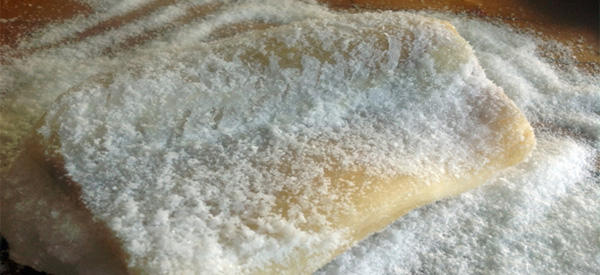




















Another fish dish that’s repulsive? Surstromming
if you take dried fish and soak it out over night it is awesome boiled with potatoes mashed together with fried pork scraps sprinkled over the top maine tradition i love it its my favorite dish
Excellent article and instructions and has now been added to my personal “Survival Guide” which includes numerous PDF Articles and many Videos as well…well done!!!
It’s always good to know how to preserve food for any occasion, especially for long periods. We live in Texas and Can’t rely on any stable Electric so we “Can” a lot and store it in a cellar to keep it cool. GOD Bless you all for all that you do…
But holy cow I lived in Texas for 3 years and y’all have your own electrical system with over 70 power companies vs where I live where’s there’s one company
Reminds of river monsters episode with the Greenland shark meat farm. Fermentation of fish always sounds disgusting but I bet if really needed it can be great. Let’s face it every cultures ancestors did something similar to this but the nords have most of the best survival/long haul means of the ancients.
There is a Virginia ham that is probably prepared in this manner because when you want to use it you soak it in the bathtub for a considerable period of time. It has been a very long time since I ordered one and the full instructions are hazy in my mind. Perhaps some other reader has more current knowledge of the ham I am talking about. My recollection is that it is called a Sheffield Ham.
While we may turn up our noses at salt cod today, in an EOTW situation, one might be quite happy to have several hundred pounds of salt cod or whatever kind of fish to eat.
I am sure the folks in Satalingrad would have been overjoyed to have salt cod as opposed to wallpaper paste or boiled belt. Or the folks in Kazakhstan during the 1930s famine.
That ham is a SMITHFIELD HAM, cured in Smithfield, VA.
I read yesterday that Smithfield is going to stop making cured ham.
I think that probably the market for Smithfield cured ham is quite limited. I bought mine many years ago and it was quite expensive then. It wasn’t my favorite ham and it was a lot of work soaking it in the bathtub for an extended period and draining the water and soaking again. We never bought another one.
However, come the EOTW and I would be quite pleased to have several Smithfield hams hanging in the coolest room of the house and, no, I am not going to just give you some. You are going to have to bust your butt to earn some Smithfield ham.
It would be too bad if that process for preserving ham got tossed into the dustbin of inconvenience. Perhaps I will have to order another Smithfield ham just to do my bit in keeping them going.
Yes, this news release from Fox News, dated yesterday:
“SMITHFIELD, Va. (AP) – Smithfield Foods is closing the last smokehouse that creates the genuine Smithfield ham.
A spokeswoman says the smokehouse had reached the end of its useful life and that, fortunately, the company has plenty of genuine Smithfield hams stockpiled to satisfy immediate demand.
The ham is a signature product of the Smithfield, Virginia, area. State law requires a Smithfield ham to be cured in the town.
Herb De Groft, a 77-year-old former Smithfield Foods executive, told The Washington Post that country meats brought the area to the fore in the 1800s.
The smokehouse is said to be more than 50 years old. Whether the company will build a new smokehouse, seek a change in state law or simply abandon the “genuine Smithfield” name is now a matter of local speculation.”
Well, there you have it. Better order your Christmas Smithfield ham early this year or be left without.
Let’s hope the greenies aren’t able to keep the company from getting the permits to build a new smokehouse.
Left Coast Chuck,
If you visit the small town, they have a museum in the area with the oldest ham and the oldest peanut. We visited a couple of weeks ago and it was very interesting to see. By the way, that small town is gorgeous with their little shops and yes, you have to try their ham!
Brother I have two hams hanging now that I cured last November I cut off what I want and soak over night then bake or boil we just call them cured hams but I live in West Virginia we use salt and sugar cure.
Under Chinese ownership now, I’m afraid … like many of our former homegrown pork producers.
I remember reading in the Little House on the Prairie books how Laura’s Ma used dried codfish to make a fish stew, little codfish balls, and some sort of fish pie. This was during a time that they had access to a general store.
Now that I have been thinking about it, I believe it is called a Smithfield Ham.
Also it is Stalingrad, although Satangrad might be an appropriate name change.
What do you do with salt at the end of the process? In a SHTF scenario we aren’t going to be able throw salt that was used in excess like this recipe.
Not a smithfield, but my granny used to keep the salt from salt pork to flavor gravy. Gave it a slight pork flavor; just salt, water, flour, and either grease, oil, or butter; whichever she had.
I had the same question in mind. When this process developed during the middle ages salt was an expensive commodity, mined by hand and laboriously transported all over Europe. I expect used salt was saved, dried in the sun, and re-used many times. I’ll be interested in any other responses.
Is there any way the salt used for this can be salvaged for reuse in the future? In a survival situation, I would imagine that salt will become a precious commodity and it would be helpful to know if it’s possible to keep it for reuse or if there would be bacterial growth from the fish juices and oils.
Believe me, you don’t want to reuse the salt.
Perhaps spreading the salt out in a thin layer in the sun and open air would allow the fish smell to dissipate and the moisture the salt took up from the fish to dissipate. I can’t believe as difficult as salt was to come by in historic times that it was just thrown away after it was used to dry the fish.
Some years back we toured some antebellum mansions in the South and the tour guide talked about how the mistress of the house maintained control of the spice cabinet which included sugar, salt, coffee, tea and the other items we commonly consider spices. She said they were always extremely expensive and almost as valuable as precious gems and gold. The mistress of the house always doled out the precise amount needed for the meal and kept the rest constantly locked in the spice cabinet.
So it would only seem logical that there must be some way to reuse the salt after it has been used to dry fish or meat. I can’t believe that folks would just throw away the amount of salt needed to dry a hundred pounds of fish.
However, other than what I outlined above, I can’t provide any other way of making the fishy salt suitable for drying meats.
Maybe Bill from Louisiana knows how salt is refreshed.
My guess is since the salt kills bacteria it should be ok to reuse, I guess if you put it into water and boil it back down to a solid it would be ok, just guessing here.
That was my thought, about salt killing bacteria, but I don’t know if it would work in a practical application or only in theory.
Thank you for all the replies. I guess it would have to be a trial thing to see if it could be reused. If it starts to smell bad, I guess you’d have your answer! I appreciate the thoughts from all of you.
I have tried this fish. I went on a hunting trip to Newfoundland in the 70’s and saw this stuff hanging on clothes lines at almost every house. I found out that it was this salted cod. I bought some and brought it home. My wife at the time cooked it and the smell made her sick. when I came home I couldn’t figure out what stunk so bad, she informed me that it was the fish I’d brought home. Needles to say we didn’t eat it and the rest got thrown away. Maybe that’s the reason she’s my former wife.
It really depends upon what you are accustomed to. We had some Japanese students at the local college stay with us for several years. I have always found the smell of cooking fish in the house at a minimum slightly unpleasant. Yet the Japanese students when they came in the house and smelled the fish cooking, said, “Ummm, yummy, fish.”
Perhaps you wife didn’t prepare it the way the Newfoundlanders did. Perhaps when they came come from a day on the dories they didn’t say, “Yuck. what’s that stench?” They might have said, “Umm, yummy boiled cod for dinner.”
Living in SoCal, my daughter had a close friend who is of latin descent. My daughter always heard about Christmas menudo and how delicious it was. Finally one Christmas Eve she was at their house and the mother was serving Christmas Menudo!!!!! Yes!!!!!
My daughter said it was the nastiest stuff she had ever tasted and wondered how in the world they could scarf it down like they did.
The Japanese eat fermented soy beans called natto. It smells nasty and from reports I have heard that it tastes just like it smells. It is highly nutritious and very healthful. My wife hates it and we have never had it in our house. It also looks quite nasty as it is stringy and goo hangs off it as one is eating it. It is also close to the color of excrement.
The Chinese consider chicken’s feet a delicacy. Excuse me? Do you stick the whole thing in your mouth and chomp down on it? From the chicken’s feet I have seen there is no meat on them.
My father loved pickled pig’s feet. If he had a jar of pickled pig’s feet he was in (excuse the pun) hog heaven. The sight of them militates against against putting them in one’s mouth.
All the above said, come the EOTW and I might be mighty happy to snarf up a bowl of natto topped off with a jar of pickled pig’s feet followed by dessert of candied chicken’s feet—or however the Chinese fix them.
I spent two years in the Army assigned to Taiwan, 70-72. Chicken feet were smoked, sometimes in peppermint. They were meant to be gnawed on, not really eaten. After gnawing a while, some of the cartilage could be swallowed. I had no problem with that. I did have a problem with the chicken soup (actually just broth). The most prominent guest at the dinner was graced with having the chicken head in his bowl. It quite humorous to see the honored guest protest his unworthiness for the honor, pick of the head with his chopsticks, and put it in the bowl of the person next to him. That person would declare himself unworthy and put it in the next person’s bowl. If service was slow, sometimes the head would make two full rounds of the table before the bowls were cleared away and replaced by the next course. I also learned that when someone offers you a piece of sugar cane, it’s perfectly acceptable to spit out the pulp after you’ve chewed it and extracted the sugar; you don’t need to swallow the pulp. People will laugh at you if you do. Good times.
Hey Mikey, Where were you stationed? I spent from September ’58 to April ’59 at PingTung Air Base with MAG-11. We got shipped there for the Taiwan Straits Crisis.
Ping Tung was about twenty miles north of Kaohsiung. Our jets could take off from the old WWII Japanese fighter strip but had to use Morest gear like on a carrier for landing. Didn’t eat in town much. Never had chicken feet. Gnawed on sugar cane on Okinawa. Never swallowed the pulp.
In my world this is called Finnian Haddie. Served traditionally at New Year’s Day in. Milk gravy with potatoes, onions and butter then slow cooked in a low oven. By the way this is after you freshen it (I.e. wash the salt out). Also Julia Child’s French cook Book Vol. 2 has a recipe for making ham. I haves used this for Year’s for rabbit, version and yes ham.
You can also do beef or pork with this method, James Townsend and Son are an excellent source for 18th century survival and stuff.
https://www.youtube.com/watch?v=ZdmPIpQZPRg
My wife is from Puerto Rico and we love Bacalao. Simply soak it in water and change the water out a couple time. The more you soak it the less salty it gets. Traditional dish is a Bacalao salad, with bell peppers, onions, green olives and olive oil. I almost always keep one box of “Salt Cod” in my fridge.
These fish live in saltwater. What about freshwater fish? Just curious.
If you can do salt water fish, beef and pork, probably chicken and turkey, why not fresh water fish?
I think the reason why more salt water fish was preserved this way than fresh water fish is that salt water fish was generally caught in larger quantities. When was the last time you saw a giant net loaded with perhaps 500 fish pulled out of even one of the great lakes?
Secondly, typically salt water fishermen traveled longer distances to the fishing banks. In the days of sailing vessels, dependent upon favorable winds or worst case, rowing, traveling in a heavily laden fishing boat required some way to preserve the fish. Most fresh water fishermen cook and consume their catch on site or only travel within one day’s travel to a fishing spot (I’m talking about walking or riding a horse, not flying in a jet plane or driving.) So the necessity of preserving was not as urgent. Also, generally fresh water fish are smaller than salt water fish. While there are giant carp, catfish and sturgeon, typically bass, trout, panfish only run a few pounds. A 25 pound trout would be one for the record books. Because of their small size, fresh water fish lend themselves to smoking. How much smoked salmon is consumed each year?
So, yes, I am sure fresh water fish can be salt dried, probably though. smoking is quicker, easier and less time consuming. Firewood is available locally, don’t have to haul large quantities of salt to your favorite fishing spot.
Hello All. I think it has to do with the way you prepare the fish. My grandmother used to make a dish with bacalao con yautias (these are Hispanic tubers) and I swear, this was delicious, I truly miss that. You can also prepare the fish as a type of fried comfort food. We call these bacalaitos (or fried codfish fritters) and the are so many recipes out there. Example: http://www.geniuskitchen.com/recipe/bacalaitos-fried-codfish-fritters-156643
I truly hope you give them a try.
The picture shows rinsing the salt off but the instructions say to wipe it off. The correct way is….
Also, is there anything you can do with the left over salt? I know it will be wet, but I know you have an idea other than weed killer!
OK, so I went back and read other comments about the possibility of reuse of the salt. When someone figures it out, I would seriously like to know. The Swedes rehydrate it with a lye solution but I haven’t figured out the ratio and will keep searching. Thanks for the great info!
There are 122 million entries regarding salt that I found. Be most assured I did not review all 122 million. I reviewed 20 pages of entries and let it go.
There is a very interesting website called beyondtheshaker.com with an extensive history of salt going back to 6,000 B.C. I recommend it just for interesting reading.
I also read a rather intriguing article about using salt in shotgun shells to ward off evil spirits. So, if you are bothered by evil spirits, you could use your used salt to disburse the evils spirits. Weird. I just skimmed the article as I am not afflicted with evil spirits. I strongly recommend thoroughly cleaning your shotgun after an episode of ghost busting with salted shotgun shells.
There is the old tale about farmers using rock salt in their shotguns to chase thieves from their vegetable patches. In an EOTW scenario one might use rock salt if they had some scruples about killing folks who were stealing food from them. I haven’t totally made up my mind about that problem but right now I am leaning toward more permanent solutions to that kind of problem that wouldn’t be handled by rock salt.
So, sorry, even after reviewing 20 pages of entries I still don’t have an answer for used salt. I would stick with my first solution, spread it out in a thin layer to dry in the sun on a low humidity day.
The other solution to dissolve it in water and heat the water to evaporation point and collect the remaining salt also seems to be a viable solution.
I might add that beyondtheshaker.com reported that evaporating ocean water in a clay pot was the first method used to reclaim salt from the ocean followed by boiling the salt water in an iron pot to reclaim the salt. The latter method was apparently used down to modern times.
I dried a pheasant’s tail from the first pheasant my grandson shot in salt but threw the salt away when the tail was totally dry. I only used a pound of non-iodized salt and the price was so low that I didn’t contemplate reusing it. In an EOTW situation though, that might become an important point.
The salt totally desiccated the tail with the feathers and it is still in my grandson’s bedroom perfectly preserved. It’s been 5 years now and it still doesn’t smell or anything.
In Sweden, it is called lutfisk (loot fisk). From what I read on a culinary website, the lady who cooked it for Christmas dinner when I was an exchange student in Sweden overcooked it. It was like jello and had a weird metallic taste to it. Better to undercook meat than overcook it. You can always cook it more but if you overcook, you risk ruining it!
Excellent article…thank you! Just wondering, as many here, if the salt can be re-used, or is it one and done? Would like solid answer, not speculation.
Not to be a smart alec or anything, but with 122 million entries regarding salt on the internet, there must be an article among the 122 mil regarding reusing salt. Unfortunately, I am not a very good web searcher. I reviewed 20 pages of entries which is about 300 entries, didn’t find anything about reusing salt and gave up the search.
If you consider yourself an above average web searcher, you might plow through the 122 million entries and find a definitive answer to your question. From the thundering silence to my earlier posting, I guess no one felt like tackling 122 million entries.
As for my web searching skill, I consider myself a below average searcher, so you shouldn’t be dissuaded by my failure to find the pertinent information.
on reusing the salt
AP-I assume you guys aren’t allowed to reuse your salt?
SE-No, the USDA has not seen the light in allowing us to do that. They aren’t always governed by common sense, more math & formulas. But if it’s an anti-microbial, how can you contaminate it? Even if you don’t know how much meat protein is still mixed in, there’s still tons of anti-microbials in there. And we’ve done experiments, if the meat was loaded with microbes after [reusing the salt], it would spoil, and it doesn’t
http://americanprovisions.com/curious-about-curing/
It also says in China they often reuse their salt for curing so I think if someone was really concerned boiling you salt in a brine or baking it to 160F or so would eliminate any issues other than possibly a scent.
A very interesting read, Malphestus. Thank you for posting the link.
I highly recommend a perusal of the link that Malphestus posted. It is interesting and has some factual material about salt which, according to the interviewee, has anti-bacterial properties. According to him the Chinese reuse their salt and it actually is better for curing than fresh salt but our FDA has the typical American approach to what works. Apparently 3,000 years of working well isn’t enough proof for the feds. Anyway, it gives them more power over everything which is the primary reason they have craniorectalitis.
I wish I could claim credit for that word but I saw it on another site where the poster said an official needed a craniorectalotomy. I love it. I am going to have to work it into my every day vocabulary. Stay tuned for more creative usage of the craniorectal root word.
One last comment, but to hasten drying a Native American that I met when getting ready to dry salmon she placed them under old cutting boards with towels covering the boards for about 1/2 hour. It was amazing the amount of water that emerged. After salting they line dryed their fish. So the extra water drawn out was to reduce drying time. As this was remote (Hoopla Indian Reservation, California)..it mean less time with fighting off animals trying to steal the fish). P.S. They didn’t smoke their fish in California because fishing season is during the FIRE Season.